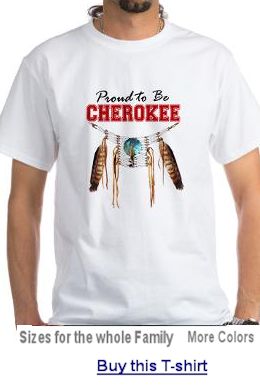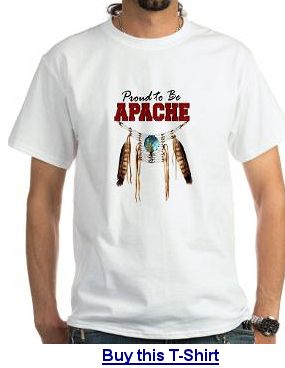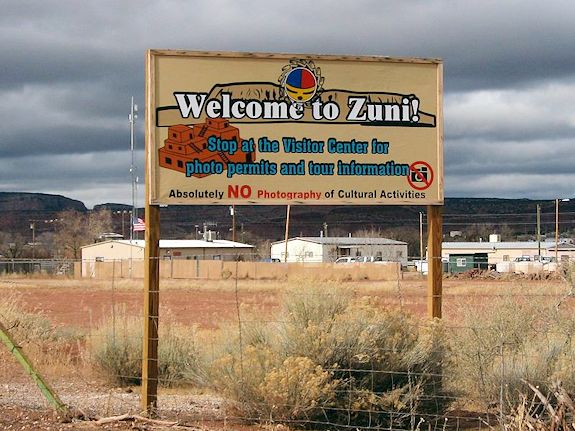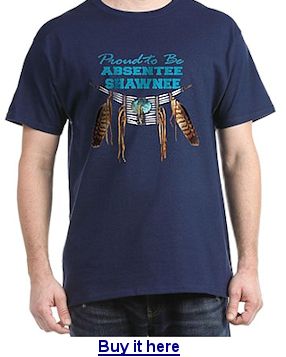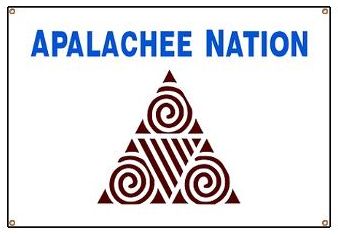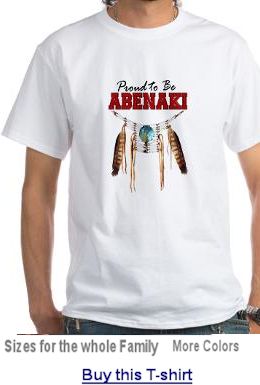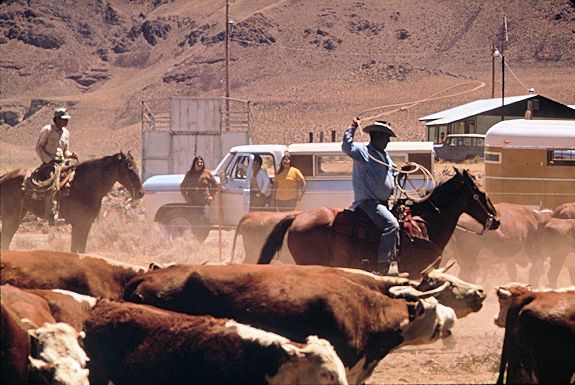The Tuscarora Nation of New York is an Iroquoian tribe with members in North Carolina and New York in the US. There is also a Tuscarora First Nation band in Canada.
US Tribes A to Z (Federally Recognized)
US Tribes A-Z
Indigenous peoples in what is now the contiguous United States are commonly called “American Indians”, or just “Indians” domestically, but are also often referred to as “Native Americans”. In Alaska, indigenous peoples, which include Native Americans, Yupik and Inupiat Eskimos, and Aleuts, are referred to collectively as Alaska Natives.
Native Americans and Alaska Natives make up 2 percent of the U.S. population, with more than 6 million people identifying themselves as such, although only 1.8 million are recognized as registered tribal members. Tribes have established their own rules for membership, some of which are increasingly exclusive. More people have unrecognized Native American ancestry together with other ethnic groups. A minority of U.S. Native Americans live in land units called Indian reservations. Some southwestern U.S. tribes, such as the Yaqui and Apache, have registered tribal communities in Northern Mexico. Similarly, some northern bands of Blackfoot reside in southern Alberta, Canada, in addition to within US borders.
A number of Kumeyaay communities may be found in Baja California del Norte.
Indian tribes are unique legal entities in the United States and are distinct political communities with extensive powers of self-government. Tribal sovereignty predates the U.S. government. Treaties, federal statutes and executive agreements over the past 200 years have established a special trust relationship between tribes and the federal government. The federal Bureau of Indian Affairs (B.I.A.) has been designated by the Secretary of the Interior as the primary agency to protect tribal interests and administer trust responsibilities.
Federal Tribes (F)
Federal tribes followed by (F) have recognition by the US. Government. Recognized Indians are those who are enrolled members of tribes from whom the federal government has acknowledged treaty or statutory obligations. There are 566 federally recognized indian tribes (as of January 14, 2015).
State Tribes (S)
State tribes marked with an (S) have recognition at the state level, but may or may not have federal recognition by the US Government.
Terminated Tribes (T)
During the 1950s, in a move to assimilate Native Americans into mainstream America, the U.S. government ended federal trusteeship of roughly three percent of the country’s Native American population through a process called termination. Of the terminated tribes, 62 were native to Oregon and 41 were in California. Others were in Kansas, Minnesota, Montana, Nebraska, New York, North Dakota, Utah, and Wisconsin. Even though the tone of the termination legislation was emancipation, the net effect of the policy on terminated tribes was cultural, political and economic devastation. In recent years, however, vigorous efforts have been mounted by terminated tribes to reestablish or restore the trust relationship. Terminated tribes are marked with (T).
UnRecognized Tribes (U)
Un-recognized tribes marked with (U) are historical indian tribes or people with Indian ancestry who are not recognized by either the Federal Government or any state government entity. Unrecognized Indians include those from tribes with whom federal relations have been severed by congressional action (termination) and those whose tribe has never been recognized by the federal government. They also include persons of indian ancestry who, for fear of persecution, fled or hid their Indian ancestry during the time the early Indian Rolls were being taken in the mid to late 1800s and early 1900s.
Petitioning Tribes (P)
Many of the Terminated Tribes and Unrecognized tribes are today petitioning to again be recognized as tribal governments with sovereign nation status or to be included in tribes they were previously terminated from. Those petitioning tribes are marked with a (P), where known. Inclusion on this site does NOT mean an endorsement has been made for recognition of any particular tribe. All entities claiming to be US indian tribes that we are aware of have been included for completeness. Where known, we have indicated official tribal status with our Key Chart. In many cases we have not verified the validity of the claim of tribal status, and leave it to your own common sense or further research to validate tribal claims.Alternate names in parenthesis are either older names that were once used to identify that tribe, shortened common names, or they are misspellings.
Most Recent Articles:
The Twenty-Nine Palms Band of Mission Indians are a federally recognized tribe of Chemehuevi people who inhabited the desert area of the Oasis of Mara (Mar’rah) in the vicinity of today’s Joshua Tree National Park. Today’s reservation is located near the city of Twentynine Palms and near the city of Coachella, California.
Brief Summary:
The Keetoowahs have always been known to be the most traditional and conservative of the Cherokee, holding on to the old ways of the full-blood Cherokee. Legends say that if these ways ever discontinue, the Cherokee will be no more. The United Keetoowah Band of Cherokee Indians in Oklahoma are the keepers of Cherokee tradition.
Upper Sioux Community
22 ViewsBrief Summary:
Upper Skagit Indian Tribe
23 ViewsBrief Summary:
The Ute Indian Tribe of the Uintah & Ouray Reservation is made up of the Whiteriver, Uintah, and Uncompahgre bands. The Uncompahgre Ute Indians from central Colorado are one of the first documented groups of people in the world known to utilize the effect of mechanoluminescence through the use of quartz crystals to generate light, likely hundreds of years before the modern world recognized the phenomenon.
The Ute Mountain Ute Tribe is one of three federally recognized tribes of the Ute Nation, and are mostly descendants of the historic Weeminuche Band who moved to the Southern Ute reservation in 1897.
Brief Summary:
The Walker River Paiute Tribe of the Walker River Reservation call themselves the Agai-Dicutta Band of Northern Paiute Nation. They say they have occupied the Walker Lake Basin area of the Great Basin Region since time immemorial.
Wampanoag Tribe of Gay Head
22 ViewsThe ancestors of Wampanoag people have lived for at least 10,000 years at Aquinnah (Gay Head) and throughout the island of Noepe (Martha’s Vineyard), pursuing a traditional economy based on fishing and agriculture. The Wampanoag Tribe of Gay Head is a federally recognized indian tribe.
Washoe Tribe of Nevada & California
22 ViewsThe Washoe Tribe of Nevada & California is located on the Nevada/California border. The tribal government has jurisdiction over trust and allotments in both Nevada and California, with additional tribal trust parcels located in Alpine, Placer, Sierra, Douglas, Carson and Washoe Counties. The Washoe are an ancient people with ties to the California and Great Basin cultures. Lake Tahoe, Nevada was the center of Washo culture.
The White Mountain Apache Tribe are Western Apache. They are closely related to the people of San Carlos, Payson, and Camp Verde. With differences in language, history, and culture, they are more distantly related to the Chiricahua, Mescalero, Jicarrilla, Lipan, and Kiowa-Apache peoples.
Wichita and Affiliated Tribes
22 ViewsThe Wichita and Affiliated Tribes are made up of descendants of the Wichita, Waco, Tawakoni, Taovaya, and Kichai people.
Wilton Rancheria
22 ViewsWilton Rancheria is a federally recognized Native American tribe of Miwok people. They were formed from Wilton Rancheria Miwok and the Me-Wuk Indian Community of the Wilton Rancheria. They are descendants of the Plains and Sierra Miwok who lived and prospered in the Sacramento Valley.
Winnebago Tribe of Nebraska
22 ViewsThe Winnebago Tribe of Nebraska is one of two federally recognized tribes of Ho-Chunk (formerly called Winnebago Indians) Native Americans. Ho-Chunk, Inc. is the tribe’s corporation that provides construction services, professional services, and business and consumer products.
Winnemucca Indian Colony of Nevada
22 ViewsThe Winnemucca Indian Colony of Nevada is a federally recognized indian tribe made up of Northern Paiute and Western Shoshone Indians in western Nevada.
Wiyot Tribe
22 ViewsThe Wiyot Tribe is a federally recognized tribe of Wiyot people from Humboldt Bay, Mad River, and lower Eel River, California. They first encountered Europeans in 1802 and non-native settlers overran Wiyot lands during the California Gold Rush during 1849.
Yankton Sioux Tribe of South Dakota
22 ViewsThe Yankton Sioux Tribe of South Dakota is a federally recognized tribe of Yankton Western Dakota people, located in South Dakota.
The Yavapai-Apache Nation is a federally recognized Native American tribe in Verde Valley, Arizona. Tribal members share two culturally distinct backgrounds and speak two indigenous languages, the Yavapai language and the Western Apache language.
Yavapai-Prescott Indian Tribe
22 ViewsBrief Summary:
The Paiute (PY-yoot) tribe is actually many different bands distributed across a large part of the western United States.The vast desert area used by the Paiutes extends from central Oregon southward through Las Vegas Valley to land along the Colorado River in Arizona and Southern California and eastward to southwestern Idaho. The Yerington Paiute Tribe of the Yerington Colony and Campbell Ranch is a federally recognized tribe of Northern Paiute Indians in western Nevada.
Yocha Dehe Wintun Nation Index
23 ViewsThe Yocha Dehe Wintun Nation are Native Americans who live in what is now Northern California. They are part of a loose association of peoples known collectively as the Wintun.
The Yomba Shoshone Tribe of the Yomba Reservation is a federally recognized tribe of Western Shoshone Indians in central Nevada.
Ysleta Del Sur Pueblo
22 ViewsThe Ysleta Del Sur Pueblo of Texas is one of three tribes located in Texas and the only Pueblo located in the state. The Tribal community, known as “Tigua”, was established in 1682 after the Pueblo Revolt of 1680. Since then, the Tribe has retained a significant presence in the El Paso region that helped pave the way for the development of the area. The Tribe maintains its traditional political system and ceremonial practices and continues to flourish as a Pueblo community.
The Yurok Tribe of the Yurok Reservation is the largest federally recognized native american tribe in California.
Zuni Tribe of the Zuni Reservation
22 ViewsThe Zuni Indians are one of 19 original tribes that once inhabited the area that is now called New Mexico and Arizona. The Zuni tribe is said to have originated from the Ancient Puebloans, a large society that encompassed large amounts of land, riches and many distinct cultures and civilizations.
US Tribes A to Z :: US Tribes A-B :: Absentee-Shawnee Tribe of Indians of Oklahoma Index
Who are the Absentee-Shawnee tribe?
The ancestral homelands of the Shawnees are in the northeastern United States. During the 19th century, the tribe was removed by the U.S. Government to what is now the state of Kansas. The group which became known as the Absentee Shawnee Tribe absented itself from the reservation in Kansas in 1845 (thus their name), and traveled southwards to Texas.
Caddo Nation of Oklahoma
22 ViewsThe Caddo Nation of Oklahoma is a single federally recognized tribe with its capital at Binger, Oklahoma. The Caddo Nation is a confederacy made up of several Southeastern Native American tribes who traditionally inhabited much of what is now East Texas, northern Louisiana and portions of southern Arkansas and Oklahoma.
Nacisi Tribe Fact Sheet
22 ViewsBrief Summary:
The Nacisi tribe were a small tribe, possibly of Caddoan stock, formerly dwelling in the region of Red River, Louisiana. They were first mentioned by Joutel in 1687, at which time they were at odds with the Cenis (Caddo confederacy). When Bienville and St Denis were exploring the Red River of Louisiana in 1700, they found a village of the Nacisi consisting of 8 houses along the river. They were still in this neighborhood in 1741, but during the 18th century, the Nacisi seem to have drifted southward beyond the border of the French province. From 1790 they are mentioned among the tribes under the jurisdiction of Nacogdoches, in Texas.
Who are the Cheyenne River Sioux Tribe?
The Cheyenne River Sioux Tribe is made up of four bands of Sioux people: the Minnecoujou, Two Kettle, Sans Arc, and Blackfoot Sioux.
The Enterprise Rancheria of Maidu Indians of California originally lived in northeastern California’s mountain meadows and valleys. Today the Maidu’s descendants live on small reservations in California or in communities near these reservations. One of these is the Enterprise Rancheria.
State Recognized and Unrecognized Cherokee tribes and bands:
Note: This list contains 348 state recognized or unrecognized Cherokee “tribes” in three countries. This list may NOT be comprehensive.
When Columbus sailed the ocean blue in 1492, and “discovered” the Americas, he brought many changes. Over the next seventy years, the Spanish sent ships up the east coast of North America, but focused on Florida’s west coast and Central and South America. Although the Spanish did meet the Timucuas, much of our information about these Native Americans comes from the French. The French explorers lived in the Jacksonville area, near Chief Saturiwa and his people, for a little over a year.
Who Were the Tocobago Indians?
22 ViewsThe Tocobago Indians were a group of prehistoric and historic Native Americans living near Tampa Bay, Florida up until roughly 1760. The archaeological name for this and adjacent groups in late prehistoric (pre-European) times is the Safety Harbor culture.
What happened to the Timucua?
25 ViewsIn the early sixteenth century native people who spoke the Timucua language occupied most of the northern one-third of peninsular Florida (east of the Aucilla River), apparently not including the Gulf of Mexico coast. The Timucua also inhabited southeastern Georgia as far north as the Altamaha River. In 1492 this large area, about 19,200 square miles, was home to approximately 200,000 people.
A veteran archaeologist, Bonnie McEwan sifts dirt in search of vanished cultures. It’s not every day she hears from one in person.
Dr. McEwan directs Mission San Luis, a 17th-century site where Spanish friars baptized thousands of Apalachee, an Indian nation so imposing that early mapmakers bestowed the tribe’s name on distant mountains, known ever since as the Appalachians. In 1704, English forces attacked, driving the Apalachee into slavery and exile. Scholars long ago pronounced the tribe extinct.
From at least A.D. 1000, a group of farming Indians was living in northwest Florida. They were called the Apalachees. Other Florida Indians regarded them as being wealthy and fierce. Some think the Apalachee language was related to Hitchiti of the Muskhogean language family.
The Abenaki tribe, together with the Maliseet, Passamaquoddy, Mi’kmaq, and Penobscot Indians, were members of the old Wabanaki Confederacy, adversaries of the Iroquois. These allies from the eastern seaboard spoke related languages, and Abenaki and Wabanaki have the same Algonquian root, meaning “people from the east.”
The Duckwater Shoshone Tribe is a Western Shoshoni tribe. The Shoshoni controlled one of the most important east-west corridors in the West.
Ely Shoshone Tribe of Nevada
22 ViewsThe Ely Shoshone Tribe of Nevada is located on the Southwest & Southeast sides of the City of Ely, Nevada in three seperate locations in White Pine County, Nevada. They are a band of the Western Shoshone indians.
The Pyramid Lake Paiute Tribe of the Pyramid Lake Reservation are Northern Paiutes. Much of the economy on the Pyramid Lake Reservation is centered around fishing and recreational activities at Pyramid Lake. In addition to permit fees for fishing, day use and overnight camping, the Tribe also receives lease revenue, and tax revenue. Several Tribal members belong to the Pyramid Lake Cattleman’s Cooperative Association and the Association utilizes the reservation desert open range to operate and manage the individual cattle herds.
Descendents of the Western Shoshone and the Northern Paiute occupy the Duck Valley Indian Reservation of Idaho and Nevada. Various bands of the two closely related tribes have jointly utilized the area from time immemorial.
In 1884, an effort to move the Western Shoshone to the Fort Hall Reservation in Idaho (and open up Duck Valley lands for non-Indian homesteads) was successfully resisted by the headmen of the bands. The Shoshone-Paiute Tribes of Duck Valley continue to exist within the original territories of their ancestors.
This is a list of American Indian tribes waiting for federal recognition by the US Government, organized by state. The list is current as of March 3, 1998 and was prepared by the Bureau of Indian Affairs, “Branch of Acknowledgment & Research.”
The Powhatan Indians
22 ViewsAt the time European settlers arrived in the Chesapeake Bay, the region was occupied by approximately 13,000 to 14,000 Powhatan Indians. The Powhatan settlements were concentrated along the rivers, which provided food and transportation.
